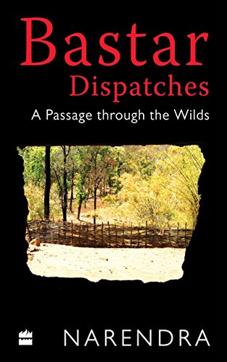Review: Bastar Dispatches by Narendra
Researcher Narendra’s book brings to life one of the fascinating tribal communities of India and the world

In the middle of this book on the tribes of Abujhmad in the forests of Chhattisgarh, the author reflects on the silences of the jungle. Over his 34 years of studying the region, he has almost become like the people he is studying. Knowing the life-worlds of the adivasis and studying their ‘simple’ life philosophy at work, he feels he too has begun comprehending his ‘hidden’ selves. It’s a lovely moment: For the author – the scribe of the tribes to the outside world – has turned his gaze inwards. Throughout this book, Narendra examines the ethos of Abujhmad and his own mentality. This book has an outward-inward approach: The observed is the subject as much as the observer. It makes for demanding reading.
Many Adivasi experiences become cud for personal rumination. In one story, a tribal woman tells the author how she fights off a bear like a wrestler and staves off its saliva while being very close to it. Bears distract easily, even when in a fight with a human, and the woman deflects the animal on to another person with her, while she speeds off to gather villagers! She and her co-itinerant survive as the change is too much for the bear to bear. In another story, a local boy faces a bear while walking on a path seconds before a storm. He is lithe and climbs up a clump of sturdy bamboo trees. Even as they sway, the bear waiting below, doesn’t give up. The tree sways to almost deliver the boy into the bear’s radius. But the storm erupts and distracts the animal away. On both occasions and more, locals refrain from uttering anything critical of the beasts. Their awe and love for nature comes from being part of nature. Instances like these lift the book to the narrative flourish of a Kipling, Elwin and Corbett.
This is a category-defying book. It collects the field notes and findings from the author’s long association with the Abujhmad tribes: a community famous for its millennia-old way of surviving despite the blitzkrieg of the State and ‘modernisation’. It’s also a memoir that traces the author’s life from his time at the Aurobindo Ashram in Pondicherry in the mid-to-late 1970s, his move to work for Vinoba Bhave’s ashram in eastern Maharashtra in the late 1970s, and the way the time at the ashram prepares him for immersion with the Abujhmad people. So this is memoir-non-fiction-anthropology rolled into one.
Narendra’s grip over the milieu is the book’s highlight. The note-taking isn’t monochromatic. As in the most exciting writing, the process of gathering the information, forces the scribe to become curious and unsettled about his assumptions, his vantage, and his life-knowledge vis-à-vis the Adivasis. His research talks back to him. The ongoing juxtaposing of the non-tribal ethos with the urbanising world and its discourses gives a sharp arc to the book’s best insights. Every few pages, Narendra contrasts the hollowness of the discourses of ‘modernity’, ‘development’, ‘democracy’, the ‘State’ and many other terms of the Western ‘Enlightenment’ that appear outlandish in self-contained, unconnected Abujhmad. Thus, the Maoist presence in these areas appears to be part of the ‘modernity’ discourse. In Narendra’s estimation, Maoism and Maoists are invasive just as the Indian State is.
When Narendra (often) allows the experiences – about man-animal interaction, mahua liquor making, local festivities, the absence of normative notions of ‘work’ or ‘purpose’ or of ‘public’ and ‘private’, the lack of a beginning, middle and end frame to Adivasi storytelling, the community’s lack of interest in the modernisation of nearby Sonepur, the fact that most residents are “lolling through life”, the paucity of words in their vocabulary – to be told without much interference, he delivers memorable prose that will make the perspicacious reader question her own life-situation in the world. The facts of their existence and attitudes are enthralling to dissect and Narendra handles them with gentleness and care.
Read more: A feast from the forest in Chhattisgarh
By temperament the adivasis of Abujhmad are minimalists. Writing about them demands such a style. Unfortunately, Narendra harps on the binary between their world and that of ‘modernity’ too often. This reader reckons the book could have gained by concentrating on communicating just their experience with the odd-but-required explication here and there. At other times, Narendra muses for far too long on the uniqueness of Abujhmad’s customs and cultures. He doesn’t let the experience of the everyday, mundane and even sometimes boring life in the forests to be expressed without persistent unpacking. These are the weakest suits of the book which needed dressing up in the Abujhmadia’s loin-cloth.
Still, this book is a thing of quality in the anthropology-sociology-non-fiction mode. Narendra’s seems a most fascinating intellect and this reviewer would definitely want to call on him sometime for a mahua drink or two.
Rahul Jayaram teaches at the Jindal School of Liberal Arts & Humanities.






